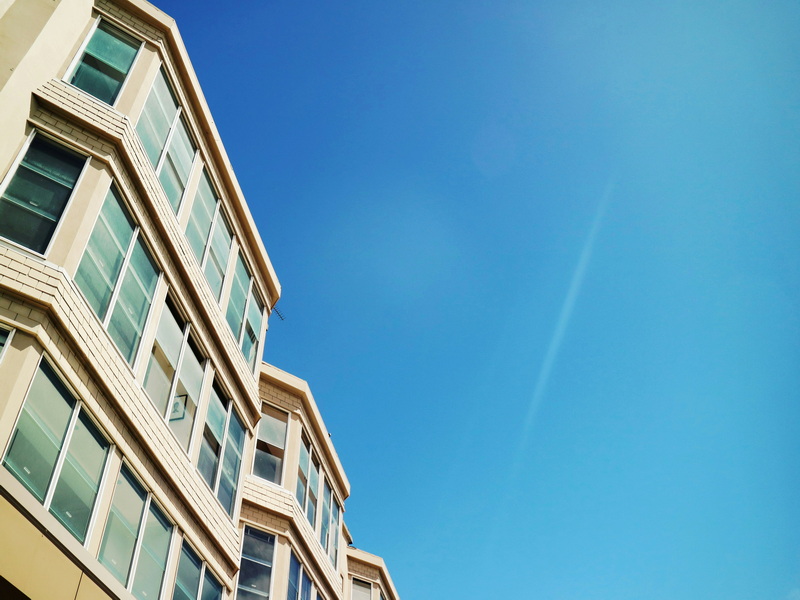English 




Views: 222 Author: Astin Publish Time: 2025-04-08 Origin: Site



Content Menu
● Introduction to Aluminum Window Components
● Impact of Aluminum Window Components on Performance
>> Structural Integrity and Durability
>> Moisture and Corrosion Resistance
● Advanced Technologies in Aluminum Window Components
● Sustainability of Aluminum Window Components
● Innovations in Aluminum Window Design
● Cost-Effectiveness of Aluminum Window Components
● Maintenance Tips for Aluminum Windows
● FAQ
>> 1. What are the primary components of aluminum windows?
>> 2. How do thermal breaks improve aluminum window performance?
>> 3. What are the benefits of protective coatings on aluminum windows?
>> 4. Can aluminum windows be energy-efficient?
>> 5. How do environmental factors affect aluminum window components?
Aluminum windows have become a popular choice for both residential and commercial buildings due to their durability, low maintenance requirements, and aesthetic appeal. The performance of aluminum windows is significantly influenced by their components, which include the frame, glazing, thermal breaks, and hardware. Understanding how these components interact and affect the overall performance of aluminum windows is crucial for making informed decisions when selecting or installing them.

Aluminum window components are designed to provide structural integrity, energy efficiency, and durability. The primary components include:
- Aluminum Frame: The frame is the structural backbone of the window, providing support for the glass and ensuring the window's stability and functionality.
- Glazing: This refers to the glass panels within the window frame. Glazing can be single, double, or triple, with options for low-e coatings and gas fills to enhance energy efficiency.
- Thermal Breaks: These are insulating materials inserted between the inner and outer parts of the frame to reduce heat transfer and improve energy efficiency.
- Hardware: Includes hinges, handles, and other mechanical parts that facilitate opening and closing of the window.
The aluminum frame is the core component that ensures the structural integrity of the window. Aluminum is a strong, lightweight material that can withstand harsh environmental conditions without warping or cracking, unlike wood or vinyl. This durability ensures that aluminum windows maintain their shape and functionality over time, even in extreme climates.
Aluminum frames are highly conductive, which can lead to significant heat transfer and energy loss if not properly insulated. Modern aluminum windows often include thermal breaks to mitigate this issue. Thermal breaks are insulating materials placed between the inner and outer parts of the frame, reducing heat transfer and enhancing energy efficiency. Additionally, double or triple glazing with low-e coatings and gas fills can significantly improve the thermal performance of aluminum windows.
Aluminum window components are susceptible to corrosion, particularly when exposed to moisture and chloride ions. However, surface treatments like anodizing and powder coating can protect the aluminum from corrosion, ensuring the longevity of the window. The window sill, another critical component, helps prevent moisture damage by directing water away from the window frame.
The performance of aluminum windows in terms of air and water tightness is crucial for maintaining indoor comfort and preventing damage. Well-designed frames and proper sealing ensure that the window remains airtight, reducing heat loss and preventing water intrusion. High-performance aluminum windows can withstand significant wind loads and water pressure, making them suitable for areas prone to typhoons or heavy rainfall.

Thermal break technology has revolutionized the energy efficiency of aluminum windows. By inserting insulating materials between the inner and outer frame parts, thermal breaks reduce heat transfer, making aluminum windows more energy-efficient.
Multi-glazing involves using multiple glass panes with air or gas-filled gaps to enhance thermal insulation. This technology, combined with low-e coatings, significantly improves the energy performance of aluminum windows.
Protective coatings such as anodizing and powder coating not only protect aluminum from corrosion but also enhance its aesthetic appeal. These coatings ensure that aluminum windows maintain their appearance and functionality over time.
Aluminum is a highly recyclable material, making it a sustainable choice for window components. The use of recycled aluminum reduces the environmental impact of manufacturing new aluminum, as it requires less energy and generates fewer emissions. Additionally, the durability and long lifespan of aluminum windows minimize the need for frequent replacements, further contributing to sustainability.
Recent innovations in aluminum window design focus on enhancing energy efficiency and sustainability. For example, the integration of advanced glazing technologies and smart coatings can improve thermal performance while reducing maintenance needs. Furthermore, the development of more efficient manufacturing processes reduces waste and energy consumption during production.
While the initial cost of aluminum windows might be higher than some alternatives, their long-term benefits make them cost-effective. Aluminum windows require minimal maintenance, reducing ongoing costs. Their durability also means they last longer, reducing the need for frequent replacements. Additionally, energy-efficient designs can lead to significant savings on heating and cooling bills over time.
Maintaining aluminum windows is relatively straightforward:
- Regular Cleaning: Use mild soap and water to clean the frames and glass.
- Inspect for Damage: Regularly inspect the frames and seals for signs of wear or damage.
- Protective Coatings: Ensure that protective coatings are intact to prevent corrosion.
- Hardware Maintenance: Lubricate hinges and handles periodically to ensure smooth operation.
Despite their advantages, aluminum windows face challenges related to thermal performance and corrosion. Solutions include the use of thermal breaks, multi-glazing systems, and protective coatings to enhance energy efficiency and durability. Additionally, advancements in materials and design continue to address these challenges, making aluminum windows an increasingly viable option for modern buildings.
Aluminum window components play a vital role in determining the performance, durability, and energy efficiency of aluminum windows. By understanding how these components interact and affect the overall functionality of the window, homeowners and builders can make informed decisions to optimize their window systems. With advancements in thermal break technology, multi-glazing, and protective coatings, combined with the sustainability and cost-effectiveness of aluminum, these windows continue to evolve as a sustainable and efficient choice for building envelopes.

- The primary components of aluminum windows include the aluminum frame, glazing (glass panels), thermal breaks, and hardware (hinges, handles, etc.).
- Thermal breaks are insulating materials placed between the inner and outer parts of the aluminum frame. They reduce heat transfer, enhancing energy efficiency and minimizing thermal bridging.
- Protective coatings like anodizing and powder coating protect aluminum from corrosion, enhance its aesthetic appeal, and ensure the longevity of the window.
- Yes, aluminum windows can be highly energy-efficient when equipped with thermal breaks, multi-glazing systems, and low-e coatings. These features improve insulation and reduce heat transfer.
- Environmental factors such as moisture, chloride ions, and mechanical loads can degrade aluminum window components over time. Proper maintenance and protective coatings can mitigate these effects.
[1] https://www.hansewindow.com/blog/the-comprehensive-guide-to-aluminum-window-design-and-components/
[2] https://pmc.ncbi.nlm.nih.gov/articles/PMC8746013/
[3] https://expresswindowsgroup.co.uk/study-of-durable-and-longlasting-aluminum-windows/
[4] https://www.windowwise.co.uk/aluminium-windows-faq/
[5] https://www.alumil.com/india/support/faq
[6] https://www.vitrowindowglass.com/window_glass/components_of_window_performance.aspx
[7] https://ecochoicewindows.ca/energy-efficiency-in-aluminum-windows-myths-and-facts/
[8] https://www.meidoorwindows.com/news/what-is-the-performance-of-aluminium-windows-and-doors/
[9] https://www.gj-alu.com/news/everything-about-aluminum-window-profiles.html
[10] https://ecochoicewindows.ca/window-frame-material-performance/
[11] https://brennancorp.com/blog/benefits-of-aluminum-windows/
[12] https://simafgroup.com/en/post/everything-that-you-need-to-know-about-aluminum-windows
[13] https://aluminiumrevival.com.au/diy-vs-professional-services-and-industry-insights/common-mistakes-diy-aluminium-window/
[14] https://windowdepotdallas.com/blog/aluminum-window-problems
[15] https://www.mdpi.com/2075-5309/2/4/542
[16] https://expresswindowsgroup.co.uk/impact-of-aluminum-windows-and-doors-on-environment/
[17] https://q1alu.com/blog/understanding-the-different-grades-of-aluminium-and-their-impact-on-fenestration-applications/
[18] https://www.technal.com/en/tme/informations/blogs/the-durability-and-strength-of-aluminum-doors-and-windows/
[19] http://mcgrawimages.buildingmedia.com/CE/CE_images/2021/dec/AluminumAdvantage.pdf
[20] https://maxwindows.com.au/performance-requirements-for-aluminium-windows-and-doors/
[21] https://altus.co.nz/about-us/news-and-articles/how-energy-efficient-are-aluminum-windows/
[22] https://www.sustainability.vic.gov.au/energy-efficiency-and-reducing-emissions/building-or-renovating/build-for-energy-efficiency/key-principles-of-energy-efficient-design/windows-and-shading/window-frames
[23] https://www.sciencedirect.com/science/article/abs/pii/S2352710220336743
[24] https://oknoplast.us/windows/aluminum-windows/
[25] https://expresswindowsgroup.co.uk/aluminium-windows-breakproof-or-not/
[26] https://chateauglass.com/2021/10/01/advantages-and-disadvantages-of-aluminum-replacement-windows/
[27] https://www.alimax.ltd/aluminium-windows-faqs
[28] https://www.techniglaze.co.uk/aluminium-windows-and-doors-faqs
[29] https://fgiaonline.org/pages/common-questions-about-residential-windows
[30] https://debesto.com/en/blog/faq-aluminium/
[31] https://www.eterniawindows.com/articles/window-frame-and-aluminium-faq/
[32] https://alumalco.ca/blog/aluminum-window-care-guide-dos-and-donts/
[33] https://ghi.co.za/aluminium-windows-the-anatomy-of-a-window/
[34] https://www.fmb.org.uk/homepicks/windows/aluminium-windows/
[35] https://expresswindowsgroup.co.uk/troubleshooting-common-aluminium-window-problems/
[36] https://fintecnic.pl/en/blog/aluminium-windows-advantages-and-disadvantages/
Top Aluminum Furnitures Manufacturers and Suppliers in Czech Republic
Top Aluminum Furnitures Manufacturers and Suppliers in Poland
Top Aluminum Furnitures Manufacturers and Suppliers in Belgium
Top Aluminum Furnitures Manufacturers and Suppliers in Finland
Top Aluminum Furnitures Manufacturers and Suppliers in Denmark
Top Aluminum Furnitures Manufacturers and Suppliers in Greece
Top Aluminum Furnitures Manufacturers and Suppliers in Portugal
Top Aluminum Furnitures Manufacturers and Suppliers in Austria
Top Aluminum Furnitures Manufacturers and Suppliers in Norway
Top Aluminum Furnitures Manufacturers and Suppliers in Sweden
